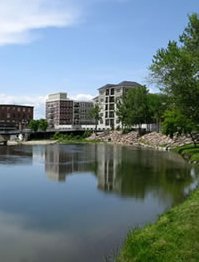Smart Growth for Coastal and Waterfront Communities

Coastal and waterfront communities have a distinctive sense of place created by their history and characteristic sights, sounds, and smells. These communities face many challenges, including potential sea level rise, hurricanes, flooding, other weather and climate-related hazards, vulnerable ecosystems, and limited land. More than half the U.S. population lives in coastal counties covering less than 17 percent of U.S. land area, and 180 million people visit coastal areas every year. Many others visit lake and riverfront communities.
Many of these communities have found that conventional development patterns threaten the assets they treasure most. Smart growth approaches can help accommodate development, protect natural resources, and keep people and property out of harm's way.
Smart Growth for Coastal and Waterfront Communities (pdf) (2009) builds on the smart growth principles to offer 10 development guidelines for coastal and waterfront communities. Developed in consultation with the Smart Growth Network, these guidelines reflect waterfront communities’ challenges and opportunities.
The publication was developed by EPA in partnership with the National Oceanic and Atmospheric Administration (NOAA), Rhode Island Sea Grant, and the International City/County Management Association. It highlights tools, techniques, and examples of smart growth in practice for planners, local decision-makers, developers, nonprofit groups, and others interested in waterfront development issues.
Learn more about smart growth and water issues.
